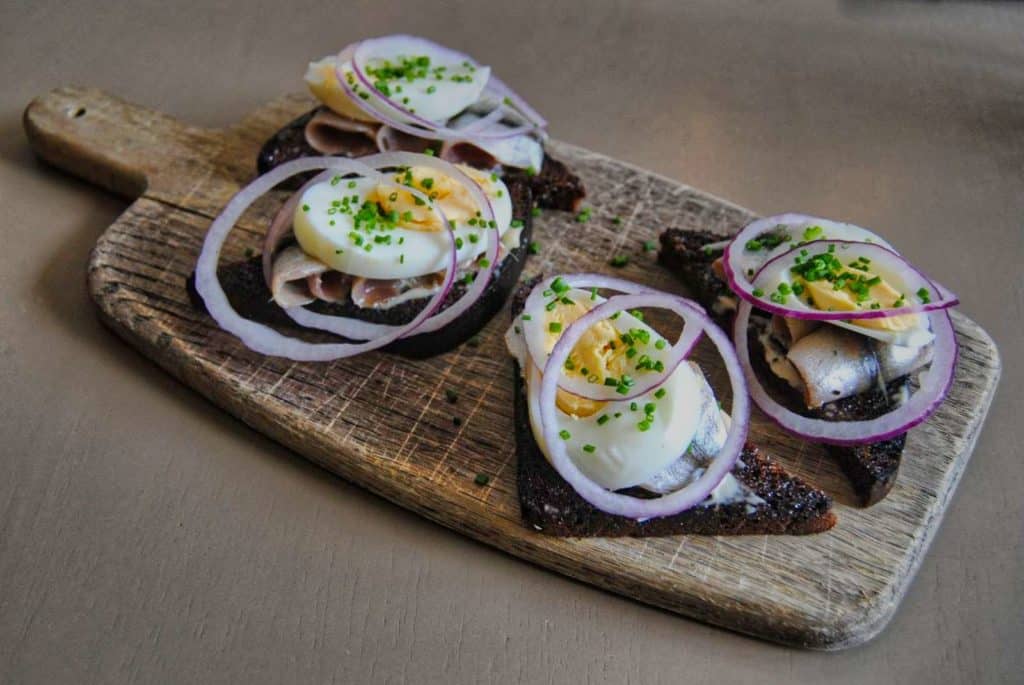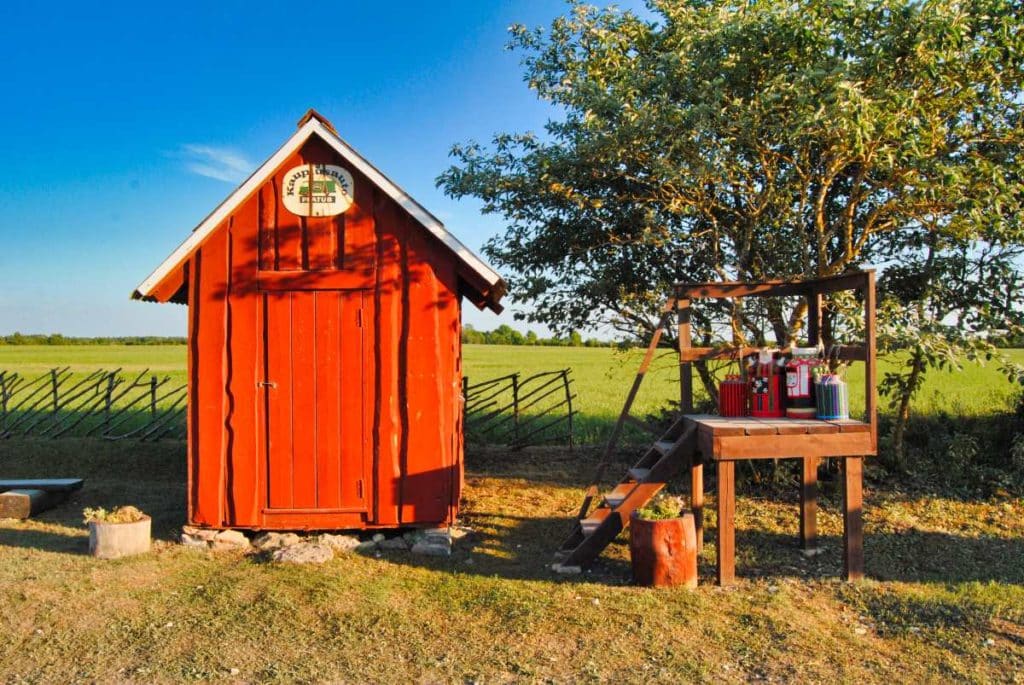The most important thing about traveling in Estonia we tell right away: It is really relaxed and easy. That said, we’ve put together a few Estonia tips that you should know beforehand so you can get the most out of your trip. And if you’re interested in what Estonia as a whole has to offer, just click here to get to our overview of the most beautiful Estonian sights.
Climate and weather
Every season has its charm, especially since the seasons are very distinct in Estonia. If you’re lucky, you’ll experience weeks of stable, dry weather in the summer and snowy magic and crisp frost in the winter. Music fans should also include some recurring festival dates in their travel plans. When exactly you should go to Estonia, for what purpose, and what the fifth season in Estonia is all about, we’ll show you here.
The absolute must-sees in Estonia
Estonia is a diverse destination despite its small size and only about 1.3 million people living here. Here is a small overview:
- Tallinn Old Town – An impressive ensemble of medieval buildings declared a UNESCO World Heritage Site
- Tallinn neighborhoods and quarters – That Tallinn is not only a very old, but also a creative city with many artists, you will learn in its neighborhoods outside the center.
- Lahemaa National Park – Old fishermen’s villages, lonely bays, manor houses and wooden houses characterize the “Land of Bays” on the north coast.
- Narva – Here in the far northeast of the country, the EU’s external border runs near the famous Hermann’ Fortress.
- Tartu – Lively student city with lots of charm, which will be European Capital of Culture in 2024
- Haanja Nature Park with Suur Munamägi – Unique natural landscape with the highest mountain in the Baltic States
- Viljandi and its folk festival – pretty place with medieval castle ruins including dream view of a lake and at the same time the center of Estonian music
- Soomaa National Park – One of the largest wetlands in Europe, which you can explore on foot or by boat.
- Pärnu – Estonia’s fashionable summer capital attracts many tourists from home and abroad every year.
- Spa town Haapsalu – Pärnu’s little sister still exudes the charm of the old days and is a quaint spa town.
- Muhu and Saaremaa – Two islands connected by a bridge with medieval ruins and photogenic lighthouses
- Hiiumaa – silence and nature can be found on this island, which also attracts many surfers.
Feel like going on a trip to Estonia? Then click here for detailed descriptions of the most beautiful Estonian sights.
Estonia travel tips – entry and formalities
Since Estonia is a member of the EU, there is nothing special to consider for Estonia itself if yiu are an EU citizen. Only those traveling with a child who does not have the same last name as oneself or driving a car whose owner is not present, one should take the precaution of carrying the appropriate certificate. Here is a list of countries that need a visa for travelling to Estonia: https://vm.ee/en/who-does-not-need-visa-visit-estonia.
If you are Polish, German or coming from Southern Europe and want to go via Kaliningrad on the way there, or from Estonia further to St. Petersburg, you have to find out beforehand what the current visa regulations for Russia are.
Estonia Arrival
The possibilities to come to Estonia are limited:
- By plane
- By long distance bus
- by ferry directly to Tallinn
- by ferry and own vehicle across the neighboring countries
- with your own car
Perhaps in the future, as part of the RailBaltic project, there will again be a viable through train connection.
How exactly you get to Estonia and how you can best get around there, we have summarized for you here.
Estonian language
Estonian belongs to the family of Finno-Ugric languages and therefore sounds quite exotic to our ears. In general, you will get along well with English, and in some parts of the country, such as the northeast, you will also get along well with Russian. On the other hand, many Estonians do not like it when Russian is spoken. In any case, it makes sense to learn a few words of Estonian. This is usually very positively received by the Estonians! By the way, we will soon publish a separate article here about the peculiarities of the Estonian language.
| English | Estonian |
| Hi! | Tere! |
| Good Morning! | Tere hommikust! |
| Thank You | Tänan |
| Bitte | Palun |
| Auf Wiedersehen | Nägemist |
| Do you speak English? | Kas Te räägite inglise keelt? |
| Excuse me | Vabandust |
| Yes | Jah |
| No | Ei |
| I don’t understand. | Ma ei saa aru. |
You want to learn more about Estonian? Then we recommend the small volume “Learn Estonian – Quick / Easy / Efficient”, with which you can take your first steps in Estonian in an uncomplicated way, without being too overwhelmed with grammar.
- Grönholm, Irja (Author)

Estonian food
The traditional Estonian cuisine is very hearty and down-to-earth. Due to the cool climate and the location on the Baltic Sea, fish dishes dominate, but also pork, bacon, potatoes, sauerkraut can be found on every menu. However, Estonia has seen a lot of culinary change in recent years. Especially in the hip capital Tallinn there are many nice corner cafes and small restaurants that rely on fresh ingredients and prepare high-quality dishes with a local touch. We will soon present Estonian cuisine in more detail in a separate article. By the way, these are the main dishes of the country:
- Hapukapsas – In Estonia, very little goes without sauerkraut, and sauerkraut is a component of many hearty dishes.
- Kiluvõileib – sprats on bread are an Estonian classic!
- Verivorst – Blood sausage is a popular food, especially at Christmas.
- Kaneelirullid – cinnamon buns originate from Scandinavia, but they are also a must in Estonian cuisine.
Money
Estonia is part of the euro area. You don’t need much cash in Estonia, because the country is on its way to becoming a cashless society.
Cash withdrawal and cashless payment
There are ATMs on every corner in Estonia, at least in the cities. In the countryside it is sometimes more difficult, but even here you can usually pay without cash. This also applies to so-called VPAY cards and payment by smartphone.
Phoning, Internet and Texting
Estonia is very advanced in digital matters. Free Wi-Fi is standard in cafés, hotels and similar establishments. In some cases, Wi-Fi is available in public areas, as well as on buses and trains, in shopping malls, and so on. If you are staying longer, an Estonian SIM card may be useful: Providers are Elisa and Telia, and offices can be found in all major shopping centers. For some special use cases you actually need an Estonian SIM card with a contract (!): For example, there are fenced, monitored parking lots without staff on site, which you can only use if you open the barrier with a call from an Estonian mobile number.
Healthcare
The Estonian healthcare system functions reliably. The emergency number is 112, which is valid throughout Europe. Most doctors work in polyclinics, where many specialists work under one roof. Pharmacies are numerous and can always be found in shopping centers. Here are the most important terms in Estonian:
- Doctor – arst
- Hospital – haigla
- Dentist – hambaarst
- Health insurance card – haigekassakaart
- Sick – haige
- Hurt – haavatud
- Emergency Doctor – kiirabi
- Pharmacy – apteek
There are hardly any serious, special health risks in Estonia. However, Estonia, especially the west and the islands are tick risk areas. Both TBE and Lyme disease are a risk. TBE vaccination is recommended, as well as the usual protective measures and daily checks.
As an EU citizen, you are automatically insured in Estonia, so you can also go to a hospital here in case of emergency. It may be that you have to pay for the treatment in advance. However, you can have the amount reimbursed by your health insurance at home. For everyone else a travel health insurance is strongly recommended or even needs to be shown while entering the country.
Security
As in health matters, Estonia is also a very unproblematic travel destination in other safety matters. Of course, pickpocketing can also occur in Estonia, and of course there are one or two cab drivers who try to earn an extra income. Basically, however, you have nothing to fear as a traveler with the usual prudence and vigilance.
Experiencing the nature
Estonia is suitable as a vacation destination for those interested in culture and history as well as for outdoor and nature lovers. For the latter, the website Loodusega koos is a crucial information point. It is operated by RMK, the State Forestry Administration, which is also responsible for the national parks. The app of the same name can also be found under RMK. For visits to the national parks, you should always go to the respective information center first. In addition, you will find information about many interesting and beautiful nature trails, which are usually the easiest way to experience Estonian nature. RMK also offers numerous well-maintained picnic areas with various facilities, such as an outhouse, a fireplace and weather protection.

Opening hours
Opening hours are loosely managed in Estonia. Larger supermarkets, which are also always found in shopping centers, are typically open from 8 am to 10 pm, often longer. Even on Sunday, these stores are usually open only a little shorter. In addition, there are almost no holidays when everything is closed. The most likely time to expect reduced hours is around 6/24, St. John’s Day. This is different for small stores, which also close on weekdays between 6 and 8 p.m. and on Sundays in Estonia. On the other hand, it is common for smaller institutions like village museums to open only on request, in which case you will find a note with a mobile phone number somewhere.
Electricity
There are no differences to most European countries both in terms of mains voltage and in terms of the sockets used. Nevertheless, we recommend the use of a travel adapter if You are from outside of Europe.
Tap water
Tap water can be drunk everywhere without hesitation, but in some parts of the country it smells somewhat of chlorine or slightly musty.
Time shift
Estonia has a time difference of +1 hour compared to Central European Standard Time and thus the same time zone as Finland, Latvia, Lithuania or Ukraine. The daylight saving time regulation is uniform throughout the EU, i.e. there remains a difference of one hour, regardless of whether it is daylight saving time or standard time.
- Altheide, Thorsten (Author)
- Rahkema, Heli (Author)

